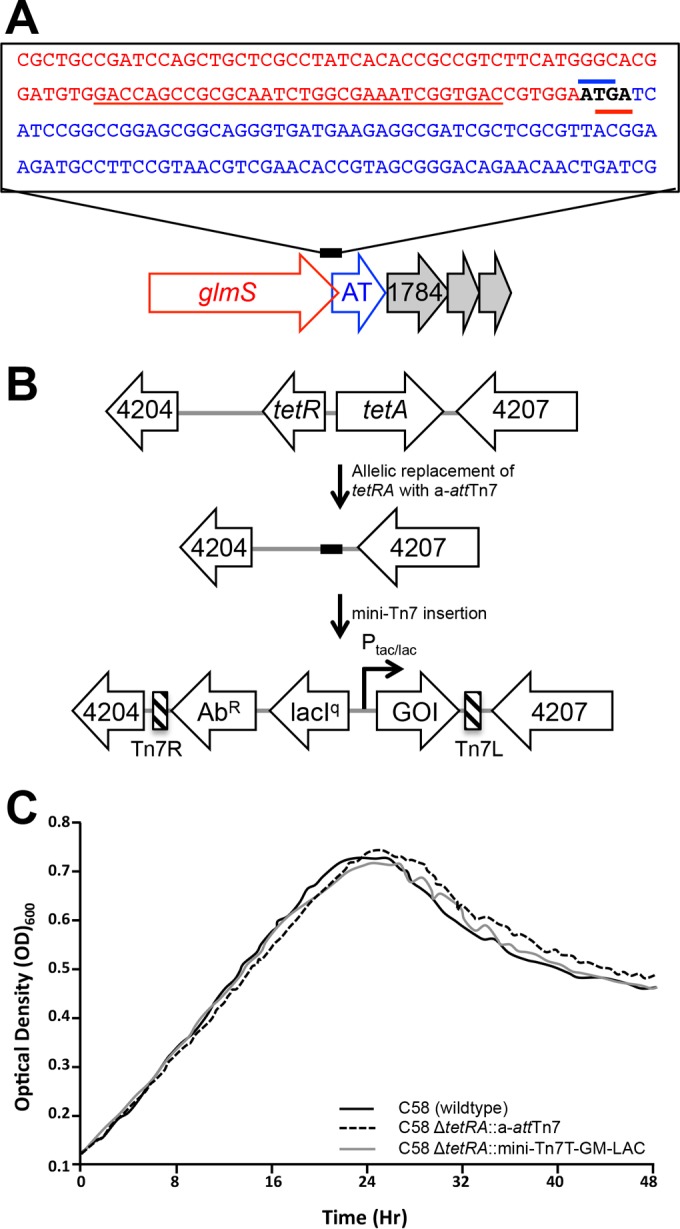FIG 1.

Construction of an a-attTn7 site in A. tumefaciens. (A) The native att site (underlined in red) is located at the 3′ end of the glmS gene (Atu1786) in A. tumefaciens. Insertion of Tn7 constructs into the native att site is not neutral, presumably due to the overlap of the glmS stop codon (red bar) with the start codon (blue bar) of the downstream gene encoding an AT (Atu1785). (B) The entire boxed sequence containing the att site in panel A was introduced into a cryptic tetracycline locus on the A. tumefaciens chromosome. Allelic exchange was used to replace the cryptic tetracycline locus (tetRA; Atu4205 to Atu4206) with the a-attTn7 site. The mini-Tn7 cassette contains an antibiotic resistance gene (AbR), the lacI repressor, and either a strong (Ptac) or weak (Plac) promoter to drive a gene of interest (GOI). The left (Tn7L) and right (Tn7R) ends of Tn7 are indicated by the striped bars. (C) Replacement of the tetRA locus with a-attTn7 (dashed line) and subsequent insertion of a mini-Tn7 cassette (gray line) do not impact cell growth in ATGN compared to the wild-type parental strain (C58; solid black line).
